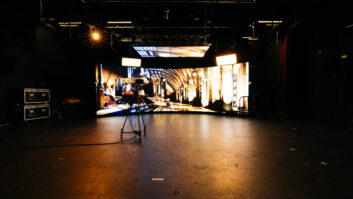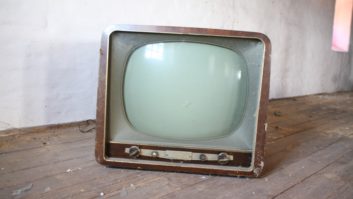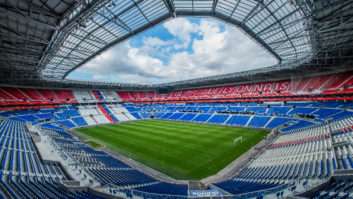At last month’s AWE Expo event, IE Residential and AWE Europe convened a special industry round table to explore the topic of screens; what are the current screen trends in the custom installation market and what is likely to change in the future.
Chaired by IE Residential editor Paddy Baker, the round table gathered together:
- Manufacturer representatives Matt Phillips, sales development executive from Philips and Adam Webber, retail support specialist from Panasonic;
- Custom installers Martin Wannell from The Bigger Picture, Patrick Murphy from CEI Europe and Jay Larson from Designed Installations;
- Residential CI distributor Stuart Tickle from AWE Europe.
Here’s what they had to say.
What are the trends in screen size?
Stuart Tickle, AWE: Five years ago it used to be 42” screens were our biggest seller in CI. Today it’s 50” and over. We see this trend for larger screen sizes continuing in the years ahead with customers migrating up to 65” as their panel size of choice for the main room in their property. People are now accustomed to the flat panel as an integral part of their home, and the quality, design and impact of bigger size screens is proving increasingly attractive.
Martin Wannell, The Bigger Picture: There is a limit to how big screens will go. Eventually, customers will decide that they will invest in a full home cinema set-up with a projector and screen for the best experience.
Patrick Murphy, CEI Europe: The 2m wide plus projector screen is still a viable option for many customers, especially since scaling up to a full home cinema takes the project price up to another level.
Stuart Tickle: As the main screen is replaced with a larger model, the original also has the potential to be redeployed elsewhere in the home, for example, in a family room.
@page_break@
What about IPTV?
Adam Webber, Panasonic: From the manufacturer’s perspective, TV’s are becoming much more like PC’s and not vice versa. For example, Panasonic VIERA CAST gives access to YouTube™, Eurosport™, Google’s Picasa Web Albums™ and many more new services directly from a VIERA TV. You can also make Skype video calls straight from the screen.
Patrick Murphy: Customers typically have no idea of what screens can do. But when you show them what’s possible nowadays, it blows them away. Having said that, it’s not a deal-clincher in the brand selection process. At least, not yet.
Jay Larson, Designed Installations: I’d agree with that. We have an education process to go through with our customers. Many features still just aren’t used because homeowners aren’t aware of screen capabilities.
Matt Phillips, Phliips: Education extends into the retail selling environment too. Sales people naturally focus on the key selling points with screens when talking to prospective buyers. Beyond that if they convey too much information then they run the risk of the consumer losing interest.
Adam Webber: Internet features delivered via the screen will inevitably become more and more important.
But the success of many internet-based TV services – IPTV, programme downloads, etc – are dependent on a reliable, fast broadband connection. Where you get about 2½ Mbps, if you’re lucky, here, in South Korea it’s 1 GB. There’s no way that the UK’s infrastructure can cope with the bandwidth needed, for example, to download and play the kind 3D content that we will be able to provide in the near future. That situation has to change.
Stuart Tickle: TV watching has become less and less bound by the broadcast schedule since the advent of on-demand services, such as the BBC’s iPlayer. This trend will continue – however, schedules will always lead and shape our viewing patterns to some extent. And some online broadcast material needs to be thought through much more clearly in how it is delivered to the user – for example, there’s no point in viewing sports programmes, such as, BTCC Touring Cars a few days after the event, when the caption as you click through to view the programme tells you Jason Plato has won!
@page_break@
Is there a market for 3D screens?
Stuart Tickle: I’m changing my mind on smaller screens for 3D. At the start I thought it had most appeal on large screens, but the new smaller screens give you a fantastic immersive experience for gaming where users are often sitting closer anyway.
Patrick Murphy: I agree. Gaming will be a major driver for 3D – gamers are much less likely to be put off by 3D glasses than the regular viewer, as they’re already used to other kit such as headsets. Other than that, we need more 3D broadcast content to make the technology more mainstream.
Martin Wannell: The 3D screen is unlikely to be the premium screen on a project and is much more likely to be used in a sub-zone of the house, for example, within a teenager’s bedroom, where again it is perfect for the gaming experience.
Matt Phillips: As TV display technology improves to create a better 3D experience, so the 2D screen experience will benefit as well. No major innovations in TVs (on the scale of HD or 3D) are planned for 2011, so maybe the technology will have a chance to settle down and the pattern of customer demand for 3D will become clearer.
What developments from the manufacturers would you like to see?
Martin Wannell: Access to the discrete input codes would make our lives a whole lot easier from a control perspective. A component input too would be very helpful as HDMI distribution is less than stable in most cases and this gives us an HD alternative.
Jay Larson: Storage is relatively cheap – how about a record-everything-across-all-channels PVR?
Patrick Murphy: Connectors that point vertically downwards are important. Not all models allow close mounting to wall because connections are still perpendicular to the plane of the screen. What is the point of slim-line screens if they cannot be easily recessed to give a flush finish?
Martin Wannell: Navigation needs to be easier and more open to integration. I’d also like to see a 3D on-off function that can be programmed into controllers.
Jay Larson: It would be really helpful if the homeowner could access programme information from say a Pronto controller, even when the screen was off. So then they would know if they actually wanted the screen on in the first place. This needs the manufacturers to provide the information for us to utilise though!
@page_break@
What other trends are you seeing?
Martin Wannell: We’ve certainly seen an increase in demand recently for bathroom TVs. A few years ago, we could count the number of screens fitted in wet room areas on the fingers of one hand; last year that number was in the hundreds. They present us with a number of challenges, not least the issue of safety and IP (water ingress protection) rating for the installation.
Patrick Murphy: The younger generation is into their networked community of friends, much more than we were. It will be interesting to see how this feeds into the screen as an interactive experience in the future.
Adam Webber: That’s true. They’re also much more used to multi-tasking. It’s possible today to be watching a show and skyping your friends with your thoughts on screen at the same time. A twitter feed is now live on the Panasonic VIERA CAST which allows you to share your thoughts on shows and movies simultaneously.







